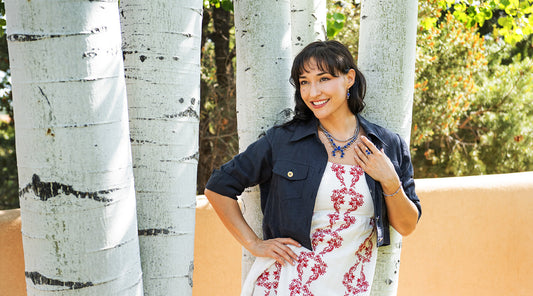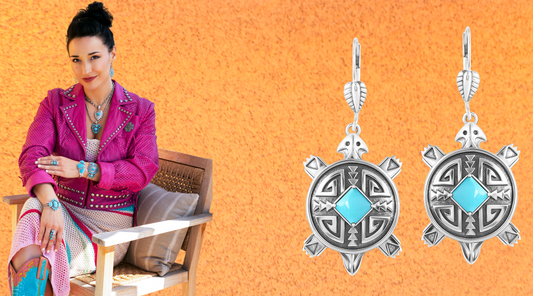
Blog

AWJ Newsletter: Carolyn in Studio at QVC to Cel...
Here’s a look at some of the stunning jewelry that Carolyn will bring to QVC! Put on your Red, White & Blue for Carolyn’s presentation of our legendary Southwestern jewelry!...
AWJ Newsletter: Carolyn in Studio at QVC to Cel...
Here’s a look at some of the stunning jewelry that Carolyn will bring to QVC! Put on your Red, White & Blue for Carolyn’s presentation of our legendary Southwestern jewelry!...

Sleeping Beauty & Kingman Turquoise: A Gem Love...
Over the years, countless fashion trends have come and gone, gaining popularity then quickly fading away as society moves on to the next big deal. However, Western fashion remains a...
Sleeping Beauty & Kingman Turquoise: A Gem Love...
Over the years, countless fashion trends have come and gone, gaining popularity then quickly fading away as society moves on to the next big deal. However, Western fashion remains a...

Sun, Style & Southwest Inspo ~ Our Favorite Sum...
Summer's warm days and endless twilights awaken a sense of adventure, wonder, and unbridled joy. It’s a time to make new friends, see new places, and try new things. The...
Sun, Style & Southwest Inspo ~ Our Favorite Sum...
Summer's warm days and endless twilights awaken a sense of adventure, wonder, and unbridled joy. It’s a time to make new friends, see new places, and try new things. The...

Artistic Storytelling ~ The Inspiring Designs o...
Fritz Casuse, Navajo, is an award-winning jewelry designer, sculptor, and artist. He is known for his mastery and distinctive vision for pulling together details that reflect the values and symbols...
Artistic Storytelling ~ The Inspiring Designs o...
Fritz Casuse, Navajo, is an award-winning jewelry designer, sculptor, and artist. He is known for his mastery and distinctive vision for pulling together details that reflect the values and symbols...

Western Fashion is Back ~ We Say it Never Left!
Western fashion is a major trend right now with its bold, adventurous, and undeniably iconic designs being worn everywhere. Cowboy hats, leather and suede clothing, and statement jewelry make frequent appearances...
Western Fashion is Back ~ We Say it Never Left!
Western fashion is a major trend right now with its bold, adventurous, and undeniably iconic designs being worn everywhere. Cowboy hats, leather and suede clothing, and statement jewelry make frequent appearances...

Made for You ~ Exclusive Jewelry You Won’t Find...
American West Jewelry is the perfect place to shop for Southwestern, Sterling Silver and Gemstone jewelry. We have a large selection of styles for every collector’s different personality, but our...
Made for You ~ Exclusive Jewelry You Won’t Find...
American West Jewelry is the perfect place to shop for Southwestern, Sterling Silver and Gemstone jewelry. We have a large selection of styles for every collector’s different personality, but our...
